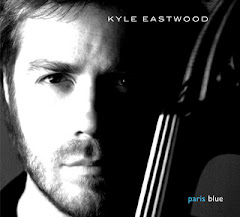I recently had the opportunity to make my second trip ever
to lovely Greenville, South Carolina. If you’ve never been there, downtown
Greenville is a nice little place, where many years ago, they had the foresight
to narrow Main Street from four lanes to two, and widened the sidewalks and
installed a bunch of greenery. The result is a quaint little boomtown, where
sidewalk cafes, restaurants, bars, and snack shops proliferate. The two jazz
clubs that I saw, however, we’re not proliferating. Both were closed.
 |
| L to R: Gage Banks, Garrett Graettinger, Morgan McGee, Roman Holder, Riley LePere. Damn! Are those great jazz musician names, or what!? |
Then I went to the first night’s reception of the event I
was attending, the 40th annual SEUS-Japan Conference, and what do you know?
There was a jazz band about to set to swinging. This jazz band was a quintet of
young men, with the unusual instrumentation of alto sax, baritone sax and
rhythm section. Of course, I had been drinking and I have no reservations about
anything when jazz is involved, so I walked right up to them and said, “Play 'Scrapple from the Apple' ”. They looked at me quizzically, as this was not in
their main repertoire from what I could gauge from their reaction. In fact, the
leader, their pianist Morgan McGee looked at me funny and said, “What?” I repeated my
request and they still looked confused. Then I goofed.
“You know, Monk!”
 |
| Roman takes a solo, while Riley plans his. (Morgan had already set them up with his bluesy lead.) |
At this point, I think they wanted me to go away, but I
didn’t. I said, “No, wait. That’s Charlie Parker. Play some Monk.” This they
could relate to. They swung through a pretty terrific take of “In Walked Bud”,
including piano and both sax solos. I complimented them and their solos, told
them to play Miles when they saw me coming out, and left for the dinner. That,
was that.
 |
| Riley and Roman go to the head ,with Garrett holding them up in back. |
Or so I thought.
At the next night’s reception, there they were again, but I
was on the other side of the venue windows. I waved, got their attention, made
piano motions and mouthed “Monk, Monk!” Once inside, I introduced myself and
my blog, and later on they did play “In Walked Bud” again, as I sat there and
enjoyed myself and Mrs. S proceeded to ingest oysters that would eventually
give her food poisoning.
 |
| Your blogger with the young saxophonists. I'm the fat one on the left. |
So, I compliment Greenville on at least trying to have a
jazz scene, and I compliment the young gentlemen you see pictured here on their
pursuit of one of America’s greatest art forms (I would say, “the greatest”).
Next time they see me, I’ll probably say, “In walked me, so you know what I
want!” I’m sure that "Bud" will be close behind.





























